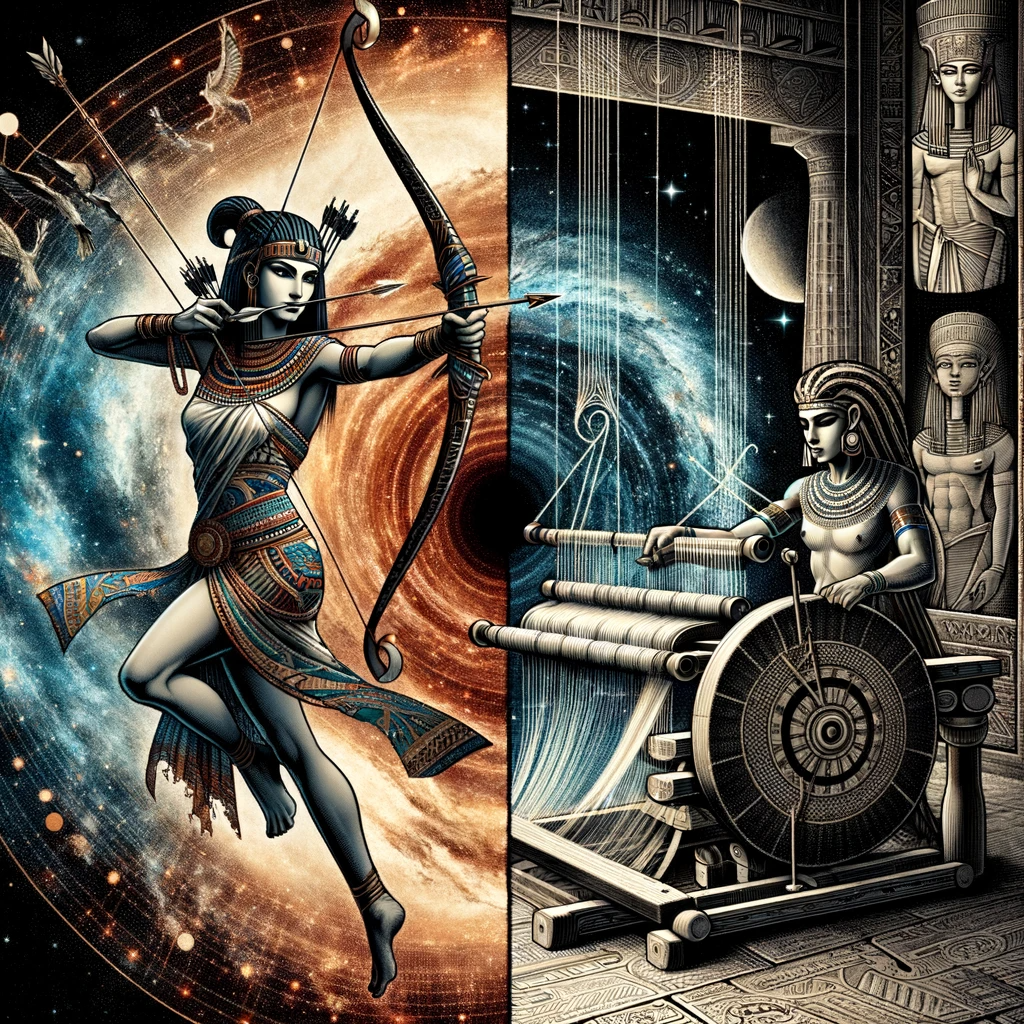
Neith, the ancient Egyptian goddess, is a captivating figure in the pantheon of deities from one of the world’s oldest civilizations. Known as one of the earliest and most significant deities in Egyptian mythology, Neith’s worship dates back to the pre-dynastic period, a testament to her enduring influence.
Origins and Historical Significance
Neith’s origins are shrouded in the mists of early Egyptian history. She is believed to have been a creation goddess, playing a pivotal role in the formation of the world and the birth of the gods. Her worship was primarily centered in the ancient city of Sais in the Western Delta.
As a testament to her ancient roots, Neith appears in various forms throughout Egypt’s long history. In early representations, she was often depicted as a warrior goddess, fierce and formidable, a protector of the pharaoh and the nation. This martial aspect aligns her with the hunting and war deities of other ancient cultures.
Symbolism and Iconography
Neith’s iconography is rich and varied. She is often depicted wielding a bow and arrows, signifying her role as a huntress and warrior. In other representations, she appears with a loom, highlighting her association with weaving—a metaphor for creating the fabric of the universe. This dual symbolism of warrior and weaver underlines her complex nature as both a creator and a protector.
The most fascinating aspect of Neith’s iconography is her association with the spider, an emblem not commonly seen in Egyptian mythology. The spider, spinning its web, is a powerful symbol of creation and interconnectedness, reflecting Neith’s role as a weaver of cosmic destiny.
Influence and Worship
Neith’s influence extended beyond mythology into the daily lives of the ancient Egyptians. She was revered as a guardian of the home and the patroness of women, particularly those engaged in weaving and domestic crafts. Her temples were centers of social and religious activity, where her followers sought her blessings for protection, fertility, and wisdom.
Legacy
Neith’s legacy in Egyptian mythology is profound. Her worship influenced the roles and representation of female deities in later periods, and her attributes were often merged with or adopted by other goddesses. This blending and adaptation demonstrate her flexibility and the Egyptians’ willingness to reinterpret their deities to reflect changing social and religious needs.
Conclusion
Neith, the spider deity of ancient Egypt, stands as a symbol of creation, protection, and the interconnectedness of life. Her enduring legacy in Egyptian mythology reflects the ancient Egyptians’ deep reverence for the forces of nature and their deities’ multifaceted roles in their lives and the cosmos. As we continue to explore and understand ancient mythologies, figures like Neith offer a fascinating glimpse into the beliefs, values, and imagination of early civilizations.
